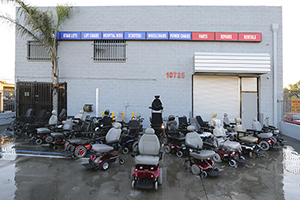Choosing the Right Walking Aid
This article is going to be focused on helping you
understand how to use your walking support devices properly. In case you are
already in need of a walking aid, the main focus is to make sure that you use
that device correctly.
We understand that using walking aids for adults might seem
easy and simple. However, there are many details, which should definitely be
considered and taken very seriously when it comes to adult mobility.
Specifications, such as your height, weight and the type of injury play a big
role in the kind of walking devices you opt for.
While we strongly advise to follow your doctor’s
orders when opting for any kind of walking aid, there definitely are certain criteria,
which will assist you to be able to make a better decision, if you have to make
the choice yourself.
1.
Walking Canes
2.
Crutches
3.
Walkers
Walking Canes: Walking
support devices
There are certain characteristics, which can be
considered for walking devices:
Style
The most commonly known style for canes is the
candy-cane walking aid, which has a curved handle. This option, however, might
not be your go-to option, if you are planning to use your walking device
throughout the whole day.
The handle is curved and has no support for the
wrist. Therefore, it cannot be the most appropriate choice for someone, who is
not a light user.
Nonetheless, there are many other options, such
as four feet walking support devices, which offer more stability, and the
handles are more comfortable to hold for a long period.
Conversely, these walking aids for adults have a
certain amount of weight to them. As a result, it can be harder to carry these
while walking.
Length
The easiest way to measure the correct length
for your walking aid is to stand straight with your arms hanging down relaxed.
If your walking device is the right length, the handle would be aligned with
the crease of the wrist. Going into more detail, the elbow would be flexed at a
30 degree angle when holding the cane.
Use
The correct way to use the cane walking devices
is to hold those on the opposite side that needs to be supported. The
vulnerable leg and the walking aid should be on the ground simultaneously. It
might take some time to practice and get how it works, but you will get used to
using your walking devices.
Crutches: Walking aids for
adults
Unlike canes, crutches walking devices are
recommended for users who have a strong upper body and decent coordination. The
two main options of crutches are standard and forearm walking support devices.
Both options offer great support and feel very comfortable if used properly.
Several things to consider, when choosing
crutches walking support devices:
Style
When it comes to crutches, there aren’t too many
options of styles to choose from. The only choice that you will really have
with the style is just how much padding the crutch has and how comfortable the
grip is for you.
Length
The thing you have to be careful about when
choosing crutches is that if it is too long, it might be harming your armpits
by pressing too hard against them. This kind of misusage of walking support
devices pressures the nerves of the armpits, causing multiple issues.
The way to know what you have chosen the correct
length of your walking aid is to make sure you can fit two to three fingers
between the end of the crutch and your armpit.
Use
Avoid placing your crutches too far ahead as you
step or they could slip out from under you. Keep the tips about 6 inches out
from your sides and keep your steps to about 12 inches. Don't lean on the tops
of the crutches when walking or standing. You can use several different
patterns of gait with your crutches. A physical therapist can advise you on the
one best suited for your needs.
Walkers: Walking aid
Just like other walking devices, walkers have
certain criteria for picking out the perfect walking aid. Keep in mind these
several points, when opting for walking aids for adults.
Style
Two main differences are between walkers with
wheels and walkers that you lift off the ground to move. However, if you are
going to use your walking aid on rough surfaces or carpets around the house, we
recommend using the regular walkers.
While regular walkers are convenient for use on
irregular ground, wheeled walkers are great for balance and for people who are
prone to falling. Walkers are great for taking the pressure off the legs and
put it on the arms. Nonetheless, be careful, if you have joint pain or any kind
of joint weakness. A great advantage that walkers have is that they come in
foldable models. So, if you want to travel and be able to take your walker with
you, you will not have any issues with that.
Length
Any walking aid should be adjustable for the
proper height. The correct height for walkers, similar to the canes, is for the
top of the walker to be aligned with the crease of the wrist, when the person
is standing up relaxed, hands at their sides.
When the height of the walker is increased,
meaning higher than recommended, it adds to the safety for the patient.
However, it will definitely make using the walker a little more difficult. With
different cases the recommended height might be different. We strongly suggest
that you consult with your doctor or physician before adjusting your walking
devices to a certain height.
Use
The biggest NOT TO DO with walkers is stairs.
You should in no case use your walking support device, if it is a walker, for
climbing stairs. The recommended way to use the walker is to put it one step
ahead of you and just make the step into the walker, leading with the injured
foot.
Grips
and tips
When it comes to grips, the most common style is
the rounded handle. This option is not the most comfortable, if you are going
to be using the walking aid for extended period. Meanwhile, there are walking
support devices handles, which are contoured. These ones feel more natural when
holding in your hand.
One more thing regarding the grips is that you
can always wrap some foam around any kind of handle to make it feel more
comfortable and true to the hand size.
Passing on to the tips of these walking devices,
there are different diameters and styles. When it comes to being more secure
and holding the ground more solid, flat tips are what you want to go with. In
case you live in a place where there is a lot of snow and the roads are icy,
there are special attachments for walking aids for adults to make sure your
walking aid does not slip on ice or get stuck in snow.
A very important point regarding tips is to
never in any case glue a new tip to the old one. Make sure you remove the old
tips from your walking devices and replace them with new ones.
Our service area covers most of Southern California including Los Angeles and surrounding cities.
To see a full list of cities covered in our service area please click here.
- Agoura Hills
- Alhambra
- Altadena
- Arcadia
- Arleta
- Artesia
- Avalon
- Azusa
- Baldwin Park
- Bel Air
- Bell
- Bell Gardens
- Bellflower
- Beverly Hills
- Bradbury
- Brentwood
- Burbank
- Cahuenga Pass
- Calabasas
- Camarillo
- Canoga Park
- Carson
- Cerritos
- Chatsworth
- Claremont
- Commerce
- Compton
- Covina
- Cudahy
- Culver City
- Diamond Bar
- Downey
- Duarte
- Eagle Rock
- El Monte
- El Segundo
- Encino
- Gardena
- Glendale
- Glendora
- Granada Hills
- Hawaiian Gardens
- Hawthorne
- Hermosa Beach
- Hidden Hills
- Huntington Park
- Industry
- Inglewood
- Irwindale
- Kagel Canyon
- La Canada
- La Crescenta
- La Habra Heights
- La Mirada
- La Puente
- La Tuna Canyon
- La Verne
- Lake Balboa
- Lake View Terrace
- Lakewood
- Lancaster
- Lawndale
- Lomita
- Long Beach
- Los Angeles
- Lynwood
- Malibu
- Manhattan Beach
- Marina Del Rey
- Maywood
- Mission Hills
- Monrovia
- Montebello
- Monterey Park
- Montrose
- NoHo Arts District
- North Hills
- North Hollywood
- Northridge
- Norwalk
- Oak Park
- Olive View
- Oxnard
- Pacific Palisades
- Pacoima
- Palmdale
- Palos Verdes
- Panorama City
- Paramount
- Pasadena
- Pico Rivera
- Pomona
- Porter Ranch
- Redondo Beach
- Reseda
- Rolling Hills
- Rosemead
- San Dimas
- San Fernando
- San Gabriel
- San Marino
- Santa Barbara
- Santa Clarita
- Santa Fe Springs
- Santa Monica
- Sepulveda
- Shadow Hills
- Sherman Oaks
- Sierra Madre
- Signal Hill
- Simi Valley
- South El Monte
- South Gate
- South Pasadena
- Stonehurst
- Studio City
- Sun Valley
- Sunland
- Sylmar
- Tarzana
- Temple City
- Thousand Oaks
- Toluca Lake
- Toluca Woods
- Topanga
- Torrance
- Tujunga
- Valencia
- Valley Glen
- Valley Village
- Van Nuys
- Ventura
- Vernon
- Walnut
- Warner Center
- West Covina
- West Hills
- West Hollywood
- West Toluca
- Westlake Village
- Westwood
- Whittier
- Winnetka
- Woodland Hills




 Accreditation Commission for Health Care
Accreditation Commission for Health Care
 RESNA Accredited
RESNA Accredited





